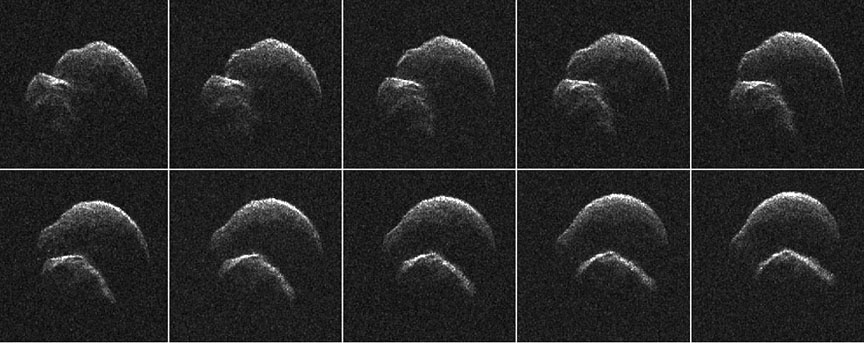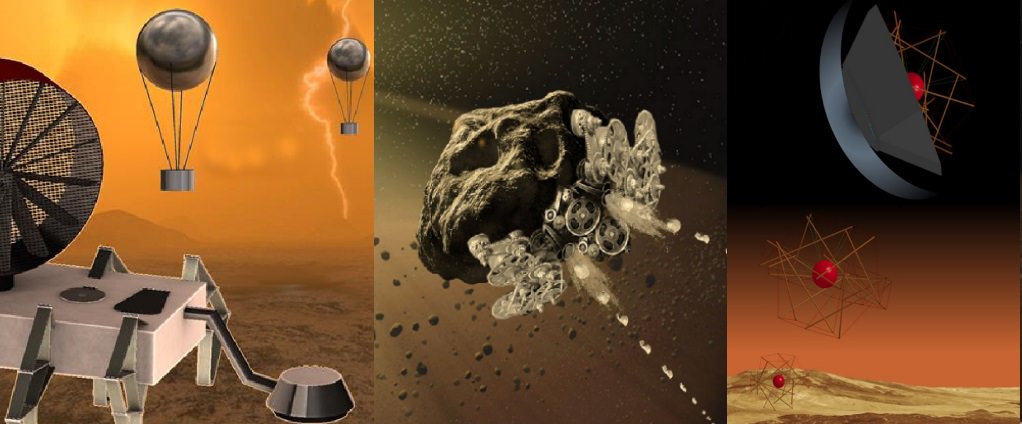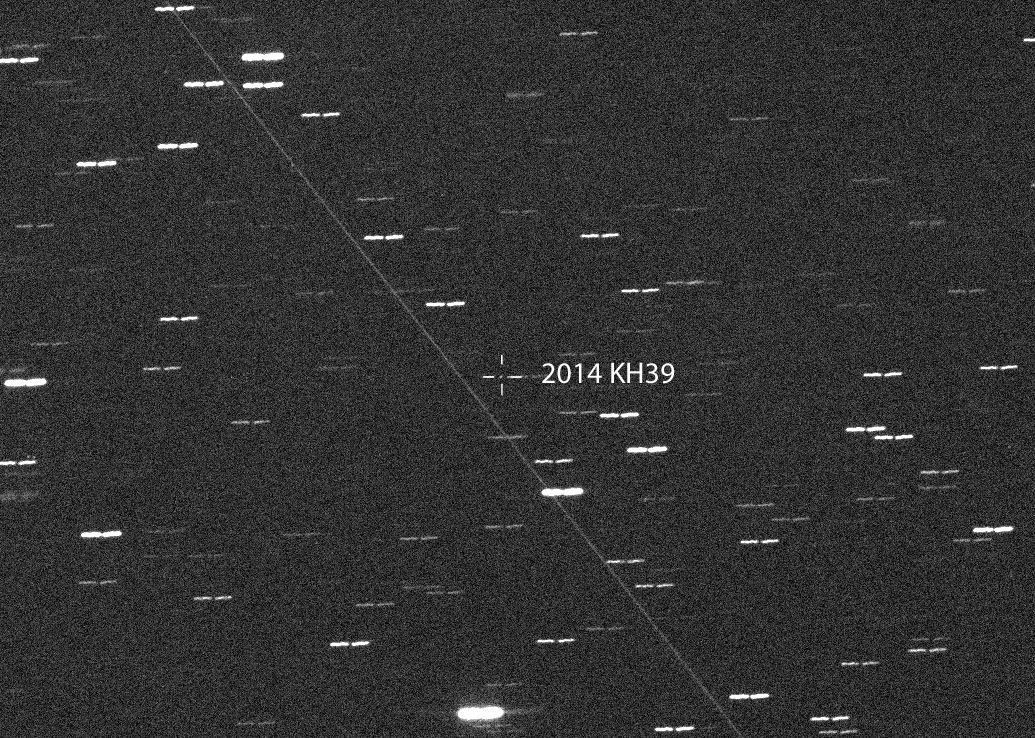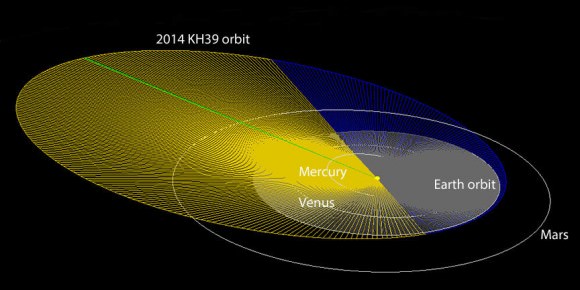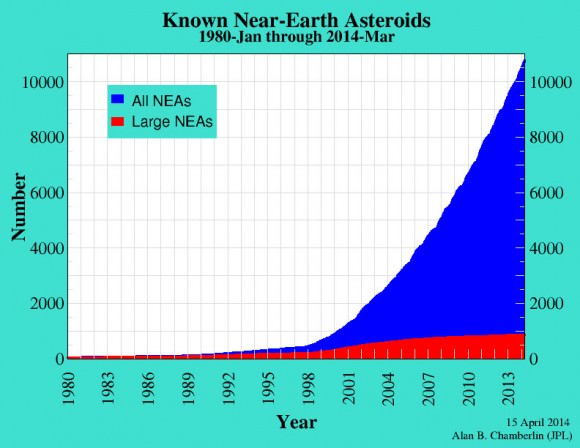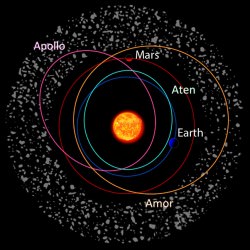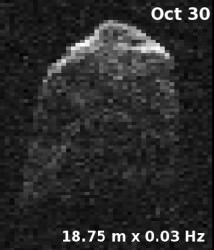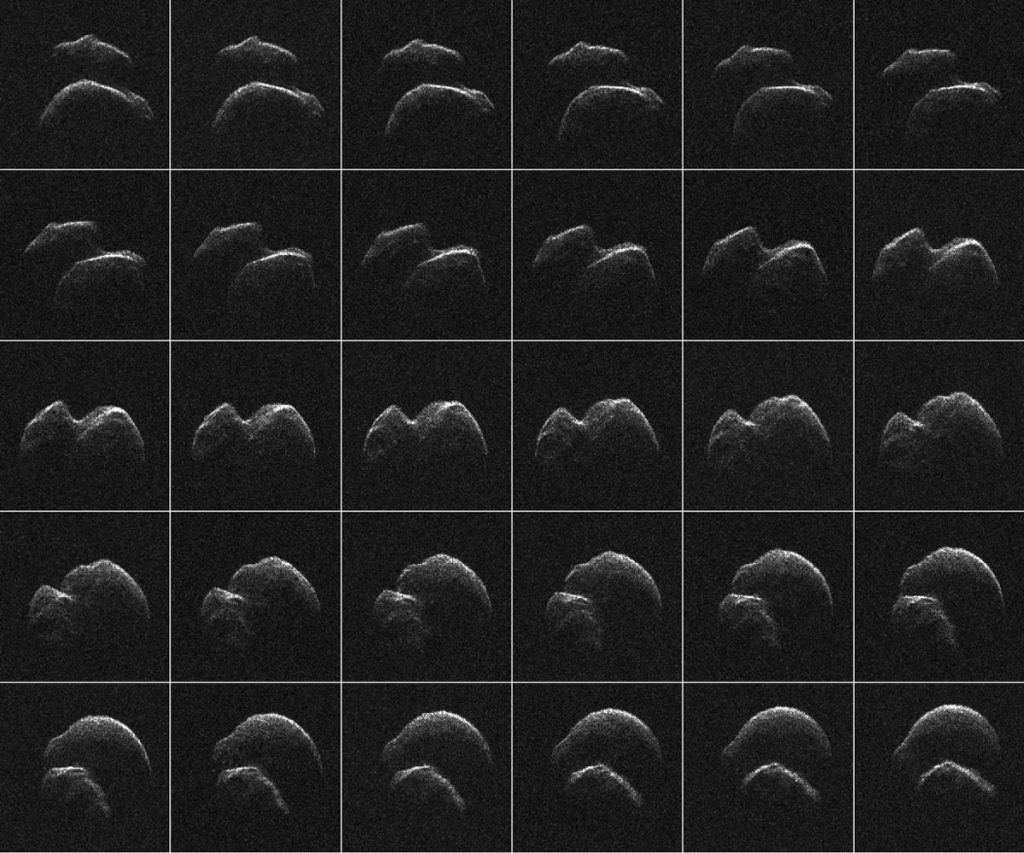
Asteroid 2014 JO25, discovered in 2014 by the Catalina Sky Survey in Arizona, was in the spotlight today (April 19) when it flew by Earth at just four times the distance of the Moon. Today’s encounter is the closest the object has come to the Earth in 400 years and will be its closest approach for at least the next 500 years.
Lots of asteroids zip by our planet, and new ones are discovered every week. What makes 2014 JO25 different it’s one of nearly 1,800 PHAs (Potentially Hazardous Asteroids) that are big enough and occasionally pass close enough to Earth to be of concern. PHAs have diameters of at least 100-150 meters (330-490 feet) and pass less than 0.05 a.u (7.5 million km / 4.6 million miles) from our planet. Good thing for earthlings, no known PHA is predicted to impact Earth for at least the next 100 years.
Most of these Earth-approachers are on the small side, only a few to a few dozen meters (yards) across. 2014 JO25 was originally estimated at ~2,000 feet wide, but thanks to radar observations made the past couple days, we now know it’s nearly twice that size. Radar images of asteroid were made early this morning with NASA’s 230-foot (70-meter) radio antenna at Goldstone Deep Space Communications Complex in California. They reveal a peanut-shaped asteroid that rotates about once every 5 hours and show details as small as 25 feet.
NASA radar images and animation of asteroid 2015 JO25
The larger of the two lobes is about 2,000 feet (620 meters) across, making the total length closer to 4,000 feet. That’s similar in size (though not as long) as the Rock of Gibraltar that stands at the southwestern tip of Europe at the tip of the Iberian Peninsula.
“The asteroid has a contact binary structure — two lobes connected by a neck-like region,” said Shantanu Naidu, a scientist from NASA’s Jet Propulsion Laboratory in Pasadena, California, who led the Goldstone observations. “The images show flat facets, concavities and angular topography.” Contact binaries form when two separate asteroids come close enough together to touch and meld as one.

Radar observations of the asteroid have also been underway at the National Science Foundation’s Arecibo Observatory in Puerto Rico with more observations coming today through the 21st which may show even finer details. The technique of pinging asteroids with radio waves and eking out information based on the returning echoes has been used to observe hundreds of asteroids.
When these relics from the early solar system pass relatively close to Earth, astronomers can glean their sizes, shapes, rotation, surface features, and roughness, as well as determine their orbits with precision.
Because of 2014 JO25’s relatively large size and proximity, it’s bright enough to spot in a small telescope this evening. It will shine around magnitude +10.9 from North America tonight as it travels south-southwest across the dim constellation Coma Berenices behind the tail of Leo the Lion. A good map and 3-inch or larger telescope should show it.
Use the maps at this link to help you find and track the asteroid tonight. The key to spotting it is to allow time to identify and get familiar with the star field the asteroid will pass through 10 to 15 minutes in advance — then lay in wait for the moving object. Don’t be surprised if 2014 JO25 deviates a little from the predicted path depending on your location and late changes to its orbit, so keep watch not only on the path but around it, too. Good luck!

